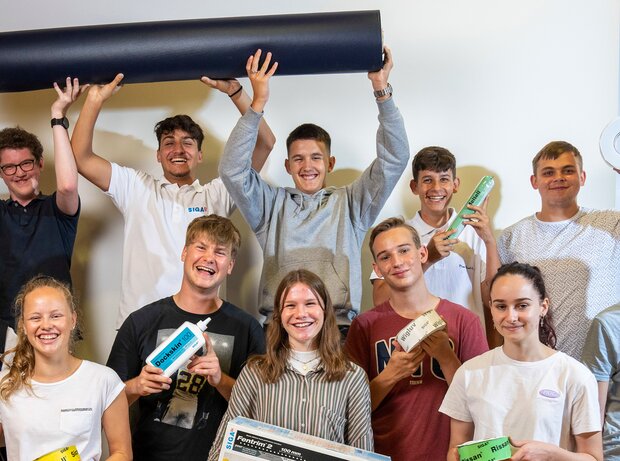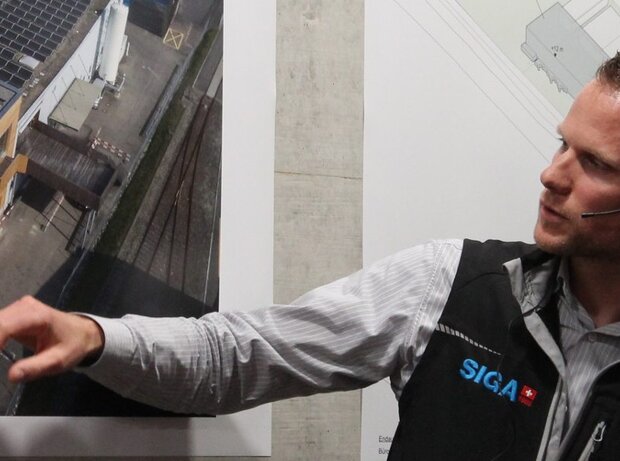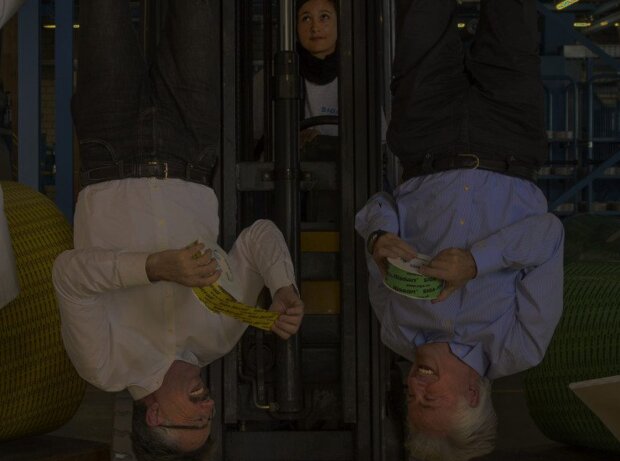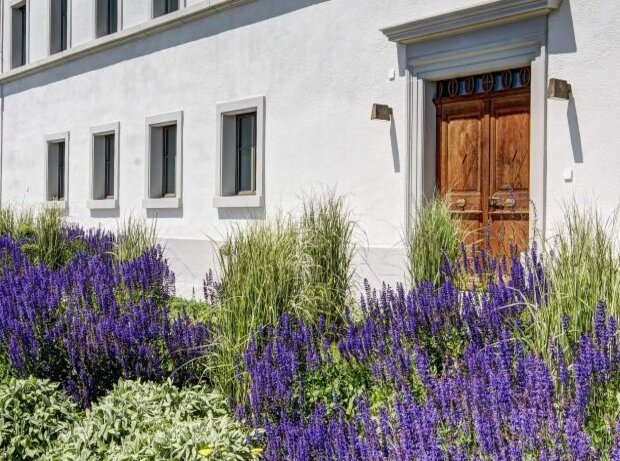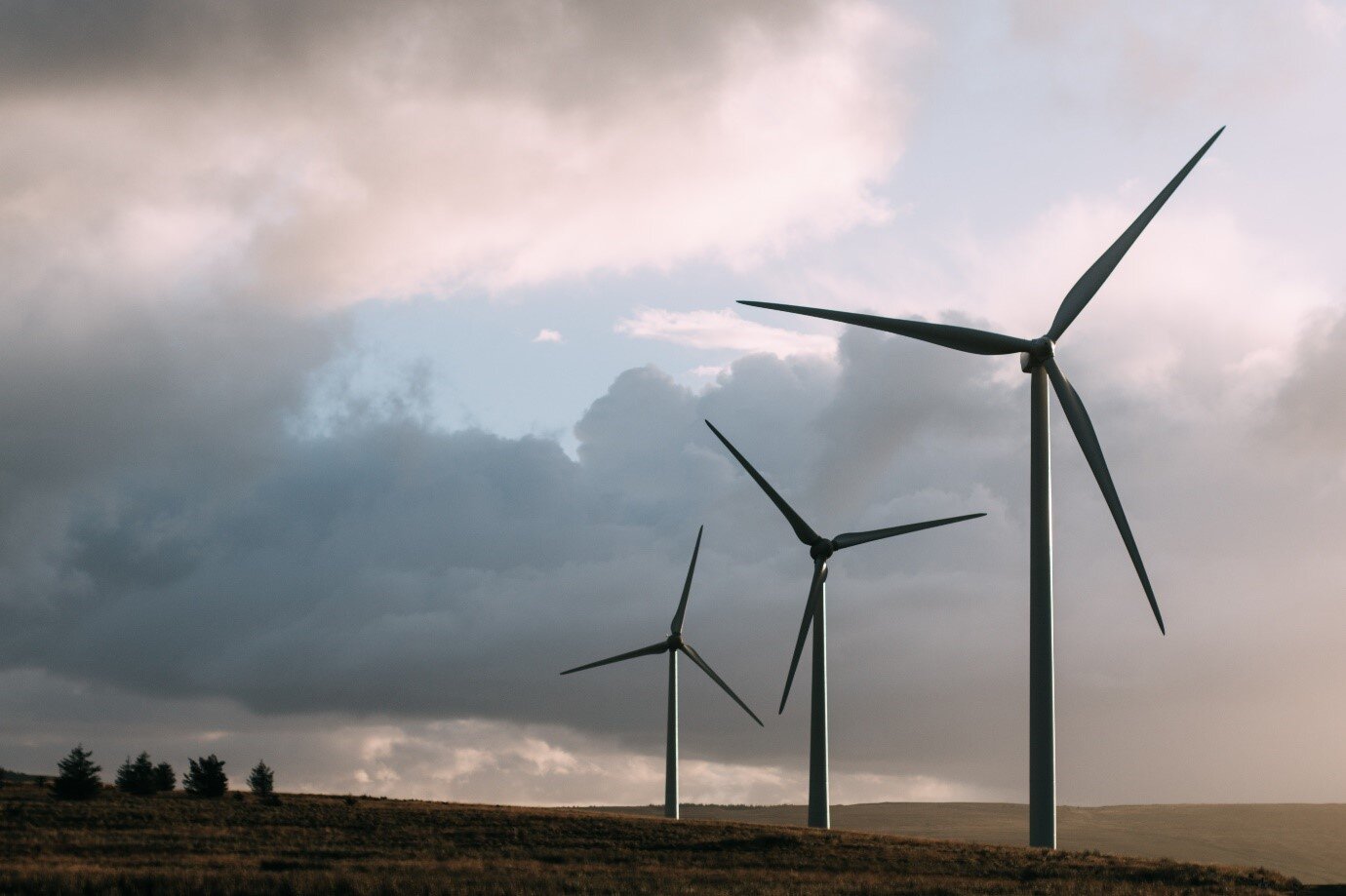
Heat Pump Retrofit: What You Need to Know – Part 2
After covering the basics in Part 1, we now dive into the practical side of installing a heat pump—what to expect, key considerations, and how to get the best performance from your system.
In the first part of this blog on retrofitting heat pumps, I shared what I have learned about how heat pumps work and how much energy and carbon they can save. In this part I look at the practicalities in a bit more detail.
Heat pumps are not SIGA’s area of expertise, so this is very much my personal view, and not SIGA‘s, but I hope you find it interesting – and maybe it will even inspire you to look into getting a heat pump of your own!
Heat pumps have improved in recent years and there are many effective installations now running, as we see below.
But some people have had, or heard about, less good experiences. It has sometimes happened that occupants can’t get their building properly warm in mid-winter. Sometimes bills are higher than expected.
And sometimes, while the system works OK, it could have been better. Improvements to the design could have made it cheaper to install, for example, or more efficient.
This is why as a customer, it is really helpful to understand heat pump systems. This can help you get a good installation, and to get the best out of your system once it is in place.
In this second article in the series, we look in more detail at the elements of a well-functioning heat pump system. The more you know, the better your questions to your installer will be, and the better you will understand their answers!
How much insulation will I need?
This isn’t so much a heat pump question as an energy, comfort and climate question. Insulation, airtightness and a whole-house ventilation system make a house more comfortable, quieter, healthier and of course, greener. This is true whatever your heating system.
If you really wanted to, you could install a heat pump system in an unimproved house. Just don’t expect it to be very cheap, or very green!
An efficient fabric gives you many advantages when installing a heat pump:
- The pump itself can be smaller – and cheaper
- The running costs will be lower
- The system may not need such large emitters
- Your building will hold the heat for longer. This means you can more readily take advantage of ‘time of use’ and ‘smart’ tariffs. This will enable further bill savings, and add to carbon savings too.
Some buildings cannot be highly insulated (for example, because of unusual construction, or heritage concerns). But you can almost always do something to reduce heat loss, without harming the building.
Specialist insulation materials are available that are safe for sensitive fabric. Replacing draughts with controlled ventilation will reduce heat loss and make a building healthier and more comfortable. Air leakage is well worth addressing as the impact is greatest in cold weather when the heat pump is working hardest.
But don’t worry - if you cannot do a super-deep retrofit, that doesn’t mean you can’t install a heat pump. You can.
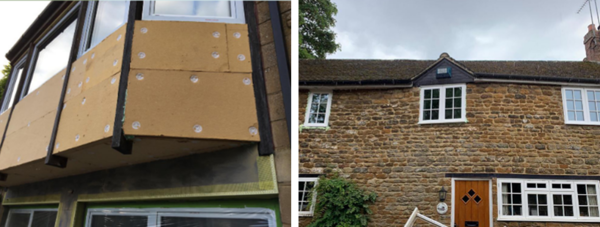
Adding new windows and insulation at the back of a traditional stone cotswolds cottage, before a heat pump was installed. Heritage concerns meant the front of the building could not be altered. Photos courtesy of Cosy Homes Oxfordshire
My boiler has broken! I don’t have time to insulate the house first!
Upgrading the fabric of your home before you install a heat pump is the ideal route – but it does of course take time. What if your boiler is in urgent need of replacement – or worse still, has already broken? You have to decide: do I install a heat pump in an ‘unready’ home – or do I buy another fossil fuel boiler?
One approach to this might be to do the best retrofit you reasonably can – but do it in your head for now! Then size your heat pump system to the (future) retrofitted house. This will ensure you don’t buy a heat pump that will be too big once you have upgraded your fabric (this can cause problems in itself, see below).
The downside is that in the mean time, you may need additional heating. This might be by electric radiators, or perhaps you already have a log stove. However, once your fabric is upgraded, you will have a well-sized system in an up-to-date, comfortable house, and can pass on the extra heaters, and stand down the polluting stove.
Bear in mind that you need at least a minimal level of home energy efficiency if you want to qualify for a heat pump subisidy. The qualifying measures are usually relatively quick and straightforward to install (eg extra loft insulation) so are well worth doing as soon as possible, and should not compromise any future plans.
Case study: fitting a heat pump in an unimproved house
Trystan Lea and his partner moved into their small terraced cottage in the wilds of Snowdonia, in the autumn of 2017.
The house was largely unimproved, with rather poor double glazing, and solid, uninsulated stone walls. But the most immediate problem was the heating. The house had a solid fuel heating system that barely worked. The backup electric heaters were very expensive to run. An effective, affordable heating system was a priority.
The couple had already decided they wanted to install a heat pump, as the lowest-carbon heating option. So they went ahead with designing and installing a system.
A small pump for maximum efficiency
Because of their commitment to cutting emissions, they opted for quite a small heat pump for the notional heat loss, in order to maximise efficiency across the year.
“We decided to tend towards under-sizing our pump, and either accept lower temperatures indoors, or if absolutely needed, to top up with the woodstove – though we try to avoid that because of the pollution it causes,” Trystan says.
The existing radiators would probably have heated the house, had the solid fuel stove been able to get them hot. But Trystan’s calculations showed they were too small to keep the house warm at the lower temperatures that work best with a heat pump. So new radiators were needed.
We switched the radiators for double panel radiators, and increased the total radiator area. The new radiators were just standard ones from a builders’ merchant - but quite a lot of them!
The house was much more comfortable
As it turned out, they needn’t have worried about being cold. “The heat pump system made the house much more comfortable, it provides a really nice even heat throughout the house,” Trystan wrote in his blog.
Concerned about maximising efficiency and minimising energy use, Trystan and his partner kept the heating turned down to a frugal 17-18 degrees for much of their first year. However, after a year or so there was an addition to the family – a new baby, born right in the middle of winter! They needed more heat, but the system coped fine, keeping the house at 19-20 degrees without struggling.
“We turned up the heating when the baby arrived, but we still only needed the flow temperature a little above 30 degrees, and the heat pump still achieved a very good average COP, close to 4.”
Retrofit would still bring benefits
Trystan and his partner are happy with the performance of the heat pump. However, they still want to retrofit the fabric of the house, and think this would bring significant benefits.
“Retrofit would reduce heat demand, and cut our bills still further, even though at the same time we would probably be able to increase internal temperatures,” Trystan says.
“It would also make it easier to move the heat pump running times out of peak hours, to benefit the grid. And it would mean the house could warm up more quickly if we needed it to.”
Pump size is important
With fossil fuel boilers, installers have tended not to worry about size very much. If a boiler is over-sized, it will cost (slightly) more to buy, but broadly speaking, will burn the same amount of fuel.
Rather than carry out careful calculations, installers just tend to fit a boiler that is more than big enough, and leave it at that – even if that means fitting a 30kW boiler where 5kw would do!
With heat pumps, it’s more important to get the sizing right.
A heat pump that is too small won’t be able to heat the house well in the coldest weather. Some systems have built-in direct electric top-up heating, so occupants don’t get cold. But if this is required more than occasionally, efficiency, and bills, will suffer.
Perhaps more surprisingly, a heat pump that is too big may also be inefficient, and therefore, expensive to run. This is because of an issue called ‘cycling’. If a pump is too big, it will tend to keep turning off and on. Each startup uses a significant burst of energy to get things going, before heat is emitted.
To size the pump well, the installer (or system designer) has to have a clear idea of how much heat your home loses – and therefore, how much heat it needs to put in to maintain a comfortable temperature through the winter.
Your designer will also calculate the heat needed for each room – an extension with patio doors and three outside walls will need more than a room with only one outside wall. A detailed survey has to be done to work this out - there aren’t any short cuts here.
Do we have to have huge radiators?
There are two ways to get more heat into a building: increasing the emitter area, and running the heating for longer. Generally it’s easiest to do a bit of both.
Lower heating temperatures mean the radiators give off heat more slowly – unless they also get bigger. So the bigger the heat emitters are, the lower your flow temperature – and the better your efficiency – can be.
If you need more emitter area, you can do this by installing thicker radiators (finned and/or double or triple panel), so you won’t necessarily lose any wall space. Replacing a single panel radiator with a double panel radiator the same size allows you to turn the heating flow temperature down from 70 to 45 degrees, and still heat the room to the same temperature.
Test your radiators
Some would-be heat pump owners have tested their existing radiator systems for ‘heat-pump readiness’ by simply turning down the boiler temperature – and seeing if their homes remain warm. This is what Dominic McCann did before replacing the gas boiler in his Manchester home (see case study below). He found he only needed two new radiators.
You obviously can’t do this in the summer – but if you are planning ahead, this is a valuable practical test.
You need enough emitter area to match the output of heat pump in all weathers (a calculation for your installer). Going beyond that will increase system efficiency, but this is up to each household and their priorities.
I thought I’d have to have underfloor heating?
Underfloor heating is another way to increase the area giving out heat. It is usually more disruptive than changing radiators though. In a house with very high heat loss (eg a historic property), underfloor heating may be the best way to give the heat pump a decent emitter area. Otherwise it is seldom actually necessary – although people who have it, „seem not to want to go back to radiators“ heat pump expert John Cantor says.
Slower, gentler heating – how long should it run each day?
Alongside well-sized emitters, for best heat pump performance a slow-and-steady approach, with heating running for longer periods, works best.
This does not mean you need to run your system 24/7. However, in cold weather a heat pump system will be much more effective and efficient if it is ‘on’ most of the time – even if the home is unoccupied for some of the day.
This is an idea that many householders struggle with to begin with, as it sounds wasteful to heat an empty house. But the longer the heating is on, the lower the heating temperature can be. The improved efficiency makes up for the heat lost from a warmer house while you are out, so you are always comfortable – for no extra cost.
Match your heating to the cheapest electricity supply
The heating can still go off for a few hours a day, for example, to avoid peak time charges for electricity.
This means you can take advantage of cheaper, lower carbon electricity when demand is low to warm up your house and heat your water. You can then ease back and take strain off the grid when demand peaks (usually between 4 and 7 in the evening)
This “pre-heating” approach is seen by the Committee on Climate Change as a key ingredient for help the UK’s national decarbonisation programme.
Hot water options
We don’t need our hot water to be at the 60 or so degrees that can be produced by a gas boiler. A lower temperature – eg 50 degrees - means the water can be heated by the heat pump much more efficiently.
As mentioned in the previous article, because the heat emitted by heat pumps is slow and steady, water needs to be heated in advance and stored until needed. A hot water cylinder or store also gives you flexibility to add in free heat from solar panels, and you can take advantage of tariffs that give very low electricity prices at certain times of day.
There are different options for storing hot water, but by far the commonest is a standard hot water cylinder.
The cylinder needs to have a (large) coil compatible with a heat pump, so an older one may need to be upgraded. It will also need provision to heat the water up to 60 degrees periodically. This is a precaution against legionella, a bacterium that can occasionally build up in stored warm water. Many installations include this function automatically.
How much space does the pump take up?
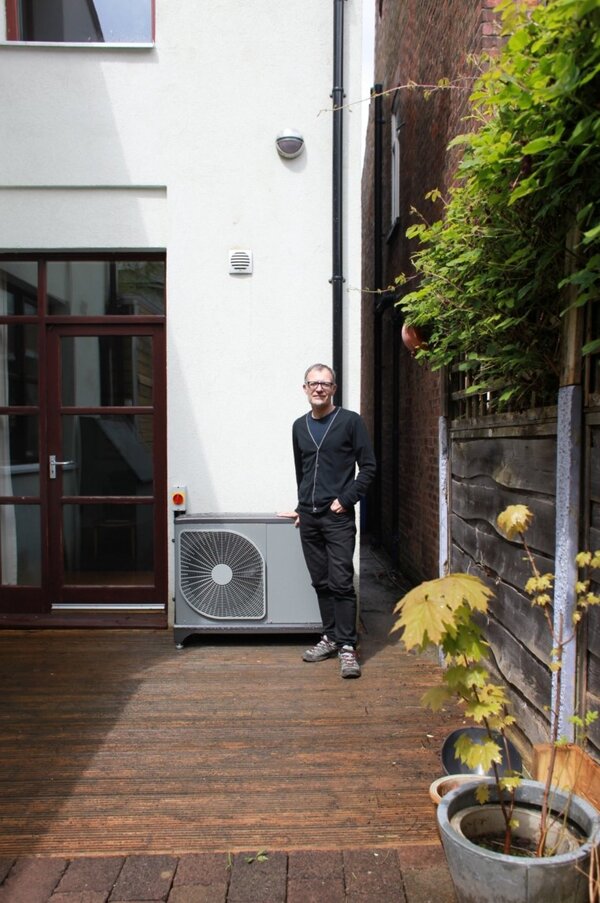
Dominic McCann with his NIBE 6kW heat pump, installed earlier this year (see case study below). Photo Allan Melia courtesy of Carbon Coop
Heat pumps need a collector, to draw in the renewable heat from the environment. For a unit powerful enough to provide space heating for a house, this needs to be outside. (Smaller units that heat hot water only, can collect enough heat from air drawn in through ducts).
Unsurprisingly, considering it is using the same technology in reverse, the collector for an air-source heat pump somewhat resembles an air conditioning unit. It consists of a coil containing refrigerant, a compressor, and a fan to blow air over the coil and warm it. The collector sits either on the ground, or on wall-mounted brackets at an accessible height. It needs to be few inches away from the wall and unobstructed, to get a good air flow.
In use the collector gives off a low hum. People therefore generally site them away from sitting areas (though they won’t be running so much in summer). Perhaps more importantly, UK regulations require them to be far enough from the windows of neighbouring homes.
This distance is normally just a few metres, so it’s usually possible to find a pump location that won’t disturb anyone. There are plenty of successful heat pump installations in standard-sized terraced homes.
How do I find the right team for the job?
To get the best from a heat pump, the system needs to be well-designed for your needs, and well-installed.
Heat pump installers may be busy with a lot of enquiries, so you may need to wait, but it is still worth taking care to find someone good.
If at all possible, seek out a word of mouth recommendation. It is also worth asking about previous heat pump installations the installer has carried out. See if you can talk direct to previous customers about their systems.
Paul Kenney, who ran the first phase of the successful Superhomes programme in Ireland (see previous article) recommends you put quality of service first and foremost: “The competence and the backup offered by installers is more critical than the manufacturer or brand. The technology itself doesn’t vary that much.”
If you plan to claim a subsidy or grant, your installer must be registered with the relevant scheme (MCS in the UK, SEAI and Electric Ireland in Ireland). While these schemes do require a basic level of competence, registration is not on its own, a guarantee of a quality service.
Questions to ask the installer
Getting several quotes is always a good idea for big projects. Price is obviously one consideration. But talking to several installers about what they think would work for your house, and why, will tell you more about your options – and tell you about the installers too.
- If installers are suggesting widely different sizes, ask them to explain why. You don’t want someone to recommend a particular size just because that is the only one they have in stock!
- An installer who is able to answer your questions clearly is more likely to be an installer who understands what they are doing.
You can opt for independent advice before accepting an installer quote. This will give you added confidence that your installer is proposing a suitable system. It is worth considering, particularly if:
- You want to combine heat pump design with advice on fabric improvement
- You are finding it hard to locate an experienced installer
- The size and/or construction of your house are not familiar to local installers, so they lack relevant experience. (see case study ‘It pays to know your house’ below)
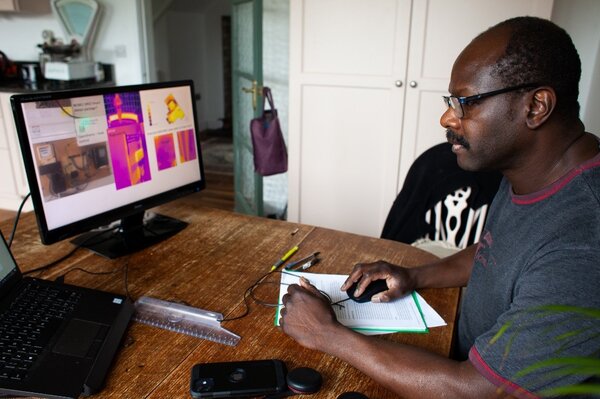
A home energy plan can give independent, tailored advice on home improvements and heat pump system design. Photo Allan Melia courtesy of People Powered Retrofit
„Home energy plans“ combining tailored advice on fabric upgrades and heating systems are available from an increasing number of retrofit advisory groups . One-off tests to double check whole house heat loss can also be done . See below for some suggested links.
Home energy surveys and retrofit plans, which can include heat pump sizing and system design are offered by a number of professionals and specialist organisations, including:
- Architects and energy consultants, retrofit co-ordinators and designers (in the UK, they may be qualified under PAS 2030 and PAS 2035) – see here for more information
- Regional advice services such as Cosy Homes Oxfordshire, Cumbria Action for Sustainability, FutureProof Bristol, People Powered Retrofit Manchester, Parity Projects London, Warmer Sussex, SEAI One-stop Shop scheme
Whole house heat loss checks can be carried out by analysing your energy bills, or by a one-off heat loss test. See for example here and here.
Having independent advice may appear to cost more at the outset. But will help ensure your system is not oversized – which would lead to higher capital costs and inefficient performance . You also want to be confident your system is big enough, so you don’t end up being cold, or having to use extra heaters. Either way – it would be money well spent.
Case study: It pays to know your house if you want the best deal
Dominic McCann (pictured earlier) and his family live in a modest-sized early 20th century home on a small urban site. Although the house is not attached on both sides, the layout is very similar to a mid-terrace.
The family was very keen to make their home more comfortable and to reduce its environmental impact. The first step was to undertake a decent retrofit of the fabric. This included insulation of the solid external walls, and under the floor.
The retrofit was organised through Carbon Coop, a group of householders and professionals interested in home energy use. As an active member of the Coop, Dominic has been recording his energy consumption for several years now. Using this information he calculated the heat loss from his retrofitted house during the coldest weather experienced in his locality (in Manchester).
“I calculated a heat loss of 4kW from our house at -3 degrees outside and 20 degrees inside. This would require a 5kW or 6kW heat pump to keep us comfortable.”
However, the heat loss calculation done by first installer the family approached suggested their house had a heat loss of 20kW – which would have necessitated a heat pump three or four times the size, and a whole new set of radiators to match.
Fortunately Dominic was able to find another installer who agreed that with all his insulation – and in view of the data he had recorded – a 6kW heat pump was indeed what they needed.
Dominic also knew that in all but two rooms in the house, the radiators were large enough to keep the rooms warm with a 40 degree heat flow – as he had trialled this already (see “test your radiators”). So just those two radiators were replaced.
So far, the heat pump performance appears promising. The system was installed in spring, close to the end of the heating season, but from the monitoring data, Dominic estimates a COP of 3.4 for heat and hot water over those first few weeks – and thanks to the longer hours of heating the house is also slightly warmer.

Kate de Selincourt
Kate is a writer and researcher specialising in sustainable and healthy building and retrofit.




